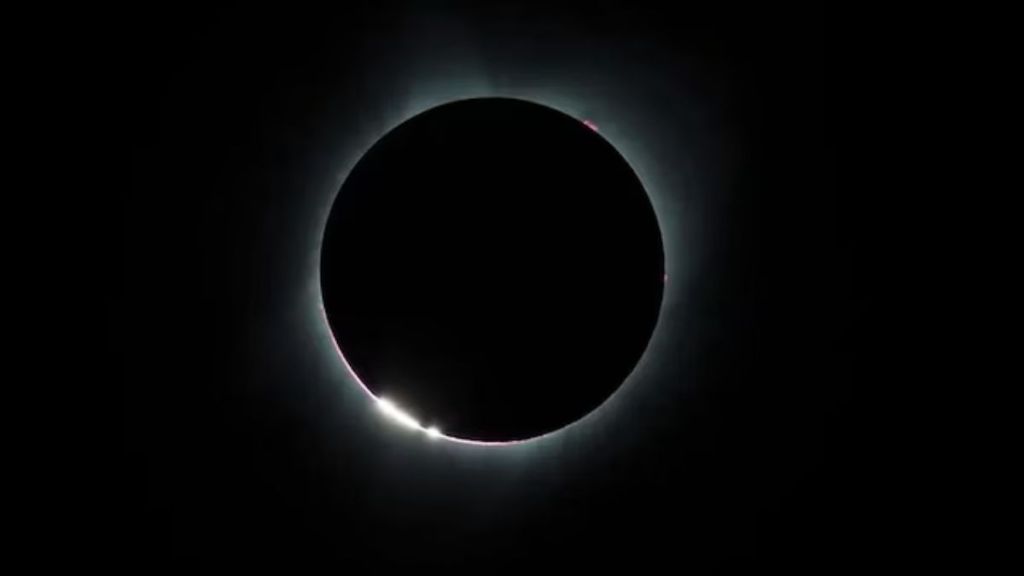The world will witness a captivating solar eclipse in 2024 that will make the Sun disappear. This will be a rare celestial event as it will completely cover the Sun, casting a nocturnal ambiance during daylight hours.
This event will occur on April 8, 2024, which will be the last opportunity to witness a total solar eclipse visible from the contiguous United States until 2044.
During a total solar eclipse, it’s the only time viewers can briefly gaze with naked eyes before sunlight fully returns, brightening the planet. However, experts caution that this should only be done during totality, when the Moon entirely covers the Sun.
What is Total Solar Eclipse?
During a total solar eclipse, the Moon moves between the Sun and the Earth, completely obscuring the Sun’s disk and casting a vast shadow on the Earth’s surface.
Observers situated within the path of totality, where the Moon’s shadow entirely obscures the Sun, will witness a total solar eclipse.
As per NASA, during this timeframe, the sky will darken, resembling the onset of dawn or dusk.
Weather permitting, individuals along the path of totality will have the opportunity to observe the Sun’s corona, its outer atmosphere typically obscured by the Sun’s bright face.
The Sun’s corona, the outermost layer of its atmosphere extending millions of kilometers into space, is exclusively visible during a solar eclipse. Appearing as a faint, pearly-white halo encircling the darkened disk of the Sun, it becomes observable only during this celestial event.
During this solar eclipse, totality will present a unique opportunity for viewers to potentially observe both the chromosphere, a pinkish region of the solar atmosphere appearing as a thin circle around the Moon, and the corona.
This brief period of totality will provide a rare spectacle, allowing observers to glimpse stars momentarily as the surroundings darken entirely. There will also be a noticeable drop in air temperatures accompanying this phenomenon.

